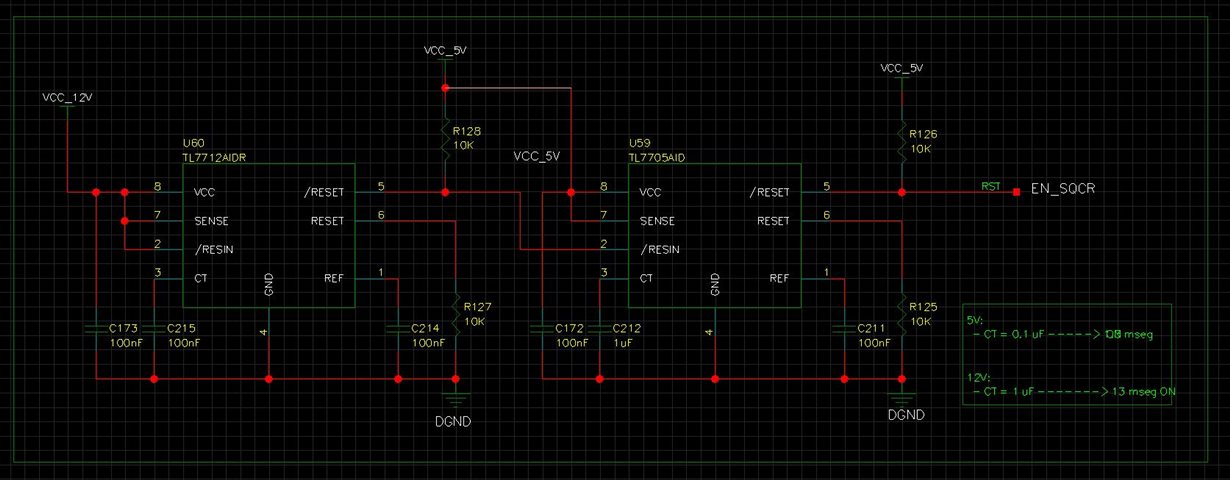We are testing a power supervision circuit that monitors 2 voltages: 12V and 5V.
This circuit activates an enable signal (EN_SQCR) for the power sequencer that follows. This signal is active at a high level. It turns out that if VCC_5V is provided, the signal EN_SQCR is activated even though VCC_12V is not on. We would like behavior not to be like that. First, the presence of voltage VCC_12V is required, and then the presence of VCC_5V.
In the datasheet you can see a circuit with triple supervision. See the following schematic:
I suppose that with this circuit first + 12V and -12V must be present. Then, when 5V is active, "System Reset" will be activated.
Is this assumption correct? In that case, I also suppose that the key element to achieve this behavior is the diode that is set in reverse at the "/ RESIN" input of the integrated on the right.
Could you give us some specification for this diode? Should it have a low reverse voltage? (Below 2V to be interpreted as a low logic level before VCC_12V is powered)
Greetings, D. Carrasco



